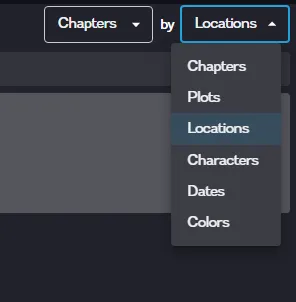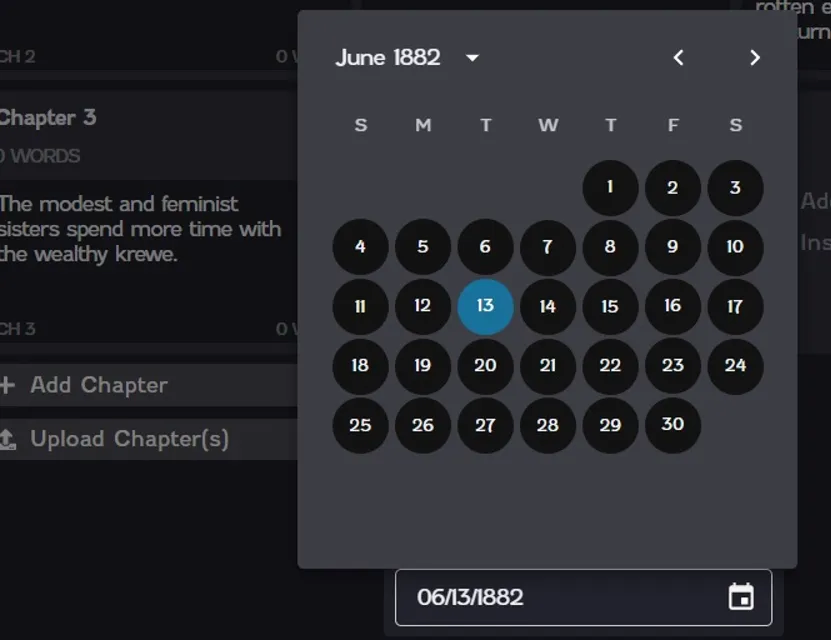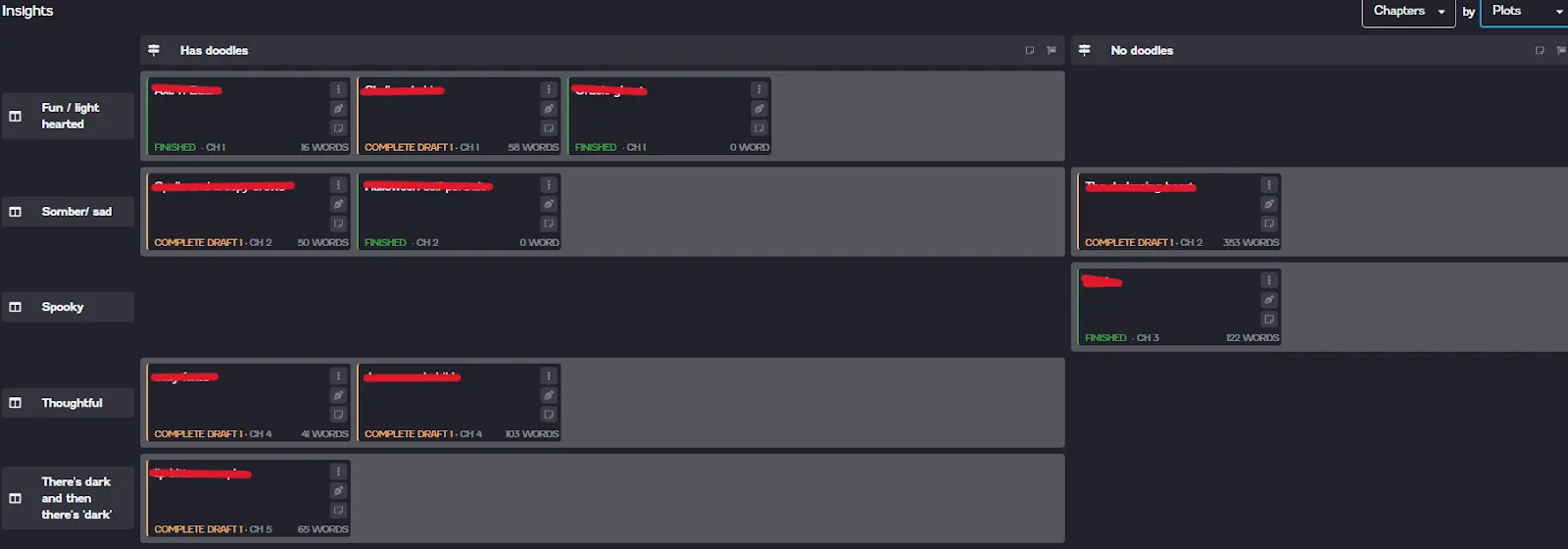How to Use NovelPad's Insight Board
S.R. Beaston
Crafty with words, wit, and wisdom, just add caffeine to make it more interesting.
NovelPad takes pride in being a writing software that focuses solely on the art of writing. It has a lot of amazing features that maximize organization and time management without all the complexities and bells and whistles that can bog down the writing experience in other programs.
While NovelPad offers a streamlined, simplified drafting experience, there are many features neatly tucked only a click away. Many writers simply find their sweet spot and never fully explore the program to its fullest. I’ve noticed one powerful feature that seems to go unchecked, and that’s the Insight board.
What is NovelPad's Insight Board?
The Insight board is a handy feature that allows you to cross-reference a couple things at once. You have six tabs to choose from (so far) and you can mix any two to see what is happening in your novel. Those six tabs include Chapters, Plots, Locations, Characters, Dates, and Colors.

This feature allows you to see the who, what, when, where, and why of your novel without cluttering your space. Here's $ your basic rundown of the Insights board$ , but let's dive a little deeper.
The leftmost box controls the vertical panel, while the second box controls the top horizontal panel. So if my first box has Chapters and my second has locations, this is how I’d see the board: Each location is listed in order by the Chapter in which it appears.

The self-explanatory icons help you know what you're looking at with a glance.
A quick reminder: To set up a scene card with Locations, Plot, and Chapters, click the three dots in the upper corner of your scene card and use the drop down to assign those elements.

Every feature in NovelPad's Insight Board
Here are the features of the Insight Board. Combining any two of these elements will give you instant data to help manage your novel.
Color labels
NovelPad allows users to create custom labels with custom colors. You can assign these labels to each scene for even more advanced organization. You might use labels to indicate POV, tone, or content.
Chapters
Compare any element with your Chapters. You can easily account for the characters, plots, and other pieces to see, for example, how often they occur in the book. If you've gone too many Chapters without seeing a particular character, that will be easy to spot here.
It’s simple and extremely effective. I like to see how my plot and subplots inhabit the Chapters to make sure I'm keeping them balanced on-page.
Plots
There can be multiple plots in a story. Some writers break up Plot assignments into plot points or sectionals, like turning events, fight scenes, or other large story beats.
I use mine as a plot and subplot. If you have multiple subplots, you can frame them in your Plots section to see them laid out nicely on the Insight board!
Locations
Locations are another of my favorite things to track. Fantasy worlds often spread over a huge map, with many diverse and interesting places, but it's so easy to forget who is where through 80,000+ words. If Chapter 13 has a Character show up at a party when they were supposed to be across the ocean, I can spot that by comparing Locations by Characters or Chapter.
Remember, your scene card has all the info you need if you’ve taken the brief time to set them up!
Characters
The star of the show for me is Character tracking. I love to see who is where and when with the Insight board. It’s a quick and easy way to map out connections and interactions.
Use this to balance character appearances throughout the book, strengthen character arcs, and patch up logistical inconsistencies.
Compare Characters with any other tab and you have a wealth of information at your fingertips.
Dates
Dates are helpful in longer projects, or ones that involve many flashbacks and flashforwards. Even a linear story set in a small section of time can get tricky with, "the next day," "four hours later," and "a couple weeks before". I know writers who keep entire spreadsheets just to track the timeline of each scene, but NovelPad keeps it all together for you.

Another use for Dates on the scene card is recording when you wrote that scene. If you're looking for something you know you wrote in March, or if you just like an extra layer of time tracking for your own scheduling and productivity purposes, this could be a useful feature for you.
How to make the Insight board work or you
The Insight board is a multi-faceted tool that suits any writing style. How you use it is completely customizable, and every writer, genre, and project have slightly different needs.
In my fantasy novel, I need to keep track of where my characters are while the main character is going about her story. This is specific for me, as I tend to lose who’s doing what and when.
Even if some of my characters make no appearance, the Insight board can remind me that in Chapter 5, while my main character is fighting a centaur, the bad guy is in the next town making a purchase, a seed I have to plant into the story even though we don’t see him do it.
If you're not working on a novel right now, the Insight board is a great way to organize poetry and shorts collections.
In my spooky poetry collection (working title), I've organized the pieces by Vibe. Some are humorous, others are terrifying. Some poems are thoughtful, while others are somber. I do not want to lean so heavily in any one direction, and I’d love to spread them out in a specific and mindful way.
I also have drawings for some of them that I plan to incorporate throughout, but there will not be a drawing for every poem.
The Insight board lets me see the general spread of my collection, helping me spot issues I couldn't see in a regular document.

Here I can see how many poems (Chapters) hit certain moods. My Plots split them into ones with drawings and ones without. Clearly, I need more poems without.
Let’s look at this novel mockup. There are three Chapters and three POVs, with three Locations.
I want to see when Barbara the Barista comes into the story. I also want to see if she has any interactions with other Characters.
Note on Characters: Scenes will show up for a Character profile when their name is mentioned. If you have multiple names for one Character (Barbara, Barb, Mom, etc), you can add them to the profile so they will show up, too.
For what I want to know, we'll look at Character by Chapter. Let’s see when Barbara shows up and who she interacts with.

Notice our three Characters are listed to the left. Chapter 3 has the same scene card three times, because all three characters appear, which means Barbara is likely interacting with the other two for the first time in that scene.
So let’s check on chapter 3! I’ve highlighted the names mentioned for a better visual of who is in the chapter and why they show up on our Insight board.

Both ‘Barista’ and ‘Barbara’ are highlighted, because both terms are listed on Barabara's Character card.
Since Laura and Jason are mentioned, they show up in Chapter 3 on the Insight board, which is exactly what I was looking for.
That’s the Insight board! I hope this breakdown answers any questions and helps enhance your NovelPad experience, because this feature has a lot to offer.
Like what you're reading?
Join other authors like you in NovelPad’s free writing community!
Join the communitySimilar Posts
What File Formats are Accepted by Kindle Direct Publishing?
File types for ebooks, paperbacks, and hardbacks on Amazon's KDP.
Ollie Ander
Is probably just a couple cats in a trench-coat—the hair shedding and sunlight napping are highly suspect.
The Writer’s Resolution Guide 2024
Goal ideas and strategies for your new writing year.
Sage Kay
Writer, reader, outfit repeater.
How To Write Strong Atmosphere In Stories
7 best tips for creating strong atmosphere in your writing.
Hannah Lee Kidder
NovelPad Author
When is the best time to publish a horror novel? [Peak Sales Method]
Make the most of your horror book launch by strategizing with these tips.
Bella Rose Emmorey
book editor, rogue behaviorist, digital marketer, writer, brand builder, plant aunt, and cheese enthusiast.
What is a ghazal? The essence of emotion in poetry
Definition, examples, and history of the ghazal poem.
Hannah Lee Kidder
NovelPad Author
Do Self-Published Authors Make More Money?
Royalty rates, merchandise sales, ad control, and other ways self-published authors stand to make more money.
Bella Rose Emmorey
book editor, rogue behaviorist, digital marketer, writer, brand builder, plant aunt, and cheese enthusiast.